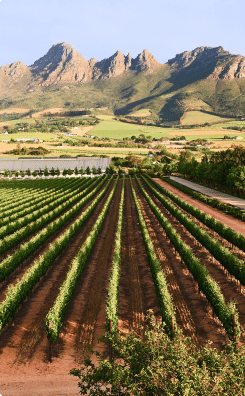Fintan Kerr: The rise of Galician wine
By Fintan Kerr, 15 June 2023

The last two decades have been nothing short of revolutionary in the world of fine wine. New, often younger, producers have popped up across the globe, bringing with them a new injection of energy and ideas. Consumer tastes have moved away from the ponderous, oak-laden wines of the ‘90s and the views of a handful of critics who often lavished praise on them. Indigenous grapes have made a comeback in Mediterranean countries, whilst New World vineyards have diversified enormously and previously unheralded regions have risen to fame.
In Spain all of this came together, seemingly quite suddenly, in Galicia, a region in the north-western corner of the country covering five appellations: Rias Baixas, Valdeorras, Monterrei, Ribeira Sacra and Ribeiro. Galicia forms a part of “Green Spain” due to its lush, green vegetation, heavier rainfall and cooler temperatures, largely influenced by its proximity to the Atlantic Ocean. Like much of Spain, the origins of winemaking here are credited to the Romans with the baton handed to the monks for the subsequent centuries. Yet its rise to fame has been recent, driven mostly by a change in consumer attitudes and a desire for fresher wines; lower in alcohol and less reliant on the heavy extraction and oak regimes that Spain became somewhat prone to in the past.
By the mid-2000s, it was becoming obvious to those in the know that Galicia was producing some of the most exciting wine in Spain, even if they rarely won medals and acclaim in the media. I worked a harvest in Alella, Catalunya in 2015 and the head winemaker spoke to me passionately about Galicia as much as he did about the harvest we were actually managing. Since then, that same enthusiasm has spread across the country and beyond, with the original pioneers of the region now joined by a number of new projects and winemakers, many of whom are a driving force behind the revolution of “The New Spain”.
For many, their first taste of fine wine in Galicia came in the form of Albariño. Supermarkets have long been awash in the overtly floral, peachy bottles produced by co-operatives and larger operations, but at its best, Albariño is one of the truly great white wines of the world. The vineyards of Rias Baixas are home to some of Spain´s oldest vines, many of them dating before the onset of phylloxera due to the inhospitable nature of its sandy soils; this raw material simply needed the right winemakers to let it show. Forja del Salnes, Zarate, DO Ferreiro and Nanclares y Prieto are all producing superlative wines; the focused, saline nature of the grape shines bright without the use of cultivated yeasts and low temperature fermentations. Eulogio Pomares, the head winemaker of Zarate, is making perhaps the most interesting wines of all under his own label, fermenting and ageing old vine Albariño in chestnut casks. The results are extraordinary.
Further inland, you could be forgiven for thinking you´d wandered into a different country entirely as you gaze upon the Sil River valleys, their steep vineyards plunging alarmingly towards the water. Grape-growing here is appropriately referred to as “heroic viticulture”, with mechanisation almost impossible to fathom, let alone implement, in some vineyards. This is the home of the peppery, brambly Mencia, though most vineyards are a chaotic blend of a number of grapes, including Merenzao (Trosseau), Brancellao, Souson, Caiño tinto and more. Field-blend fermentations are common, with Envinate´s evocative “Lousas de Aldea” an absolute benchmark for the region and one of Spain´s greatest QPR red wines. Fedellos do Couto, Fazenda Pradio, Algueira, Guimaro, Castro Candaz and Lalama are all leading wineries on these green slopes, producing wines that are often, justifiably, compared to the finest examples of the Northern Rhône with which they share a stylistic kinship.
Separated from Ribeira Sacra by the Bibei River, Valdeorras is Galicia´s eastern-most region. Granite and sand form the backbone of the soils here, with the same perilous slopes as their neighbour, yet the star of the show is the nervy, white Godello grape. Rafael Palacios has become the leading producer of Godello, with his As Sortes and Sort o Soro bottlings in particular generating favourable comparisons to top-end, white Burgundy with its effortless energy, verve and persistence. The same combination of nutrient poor granitic soils, steep slopes and southern aspects led Telmo Rodriguez to Valdeorras, where he produces the finest Mencia in the region from remarkable, abandoned vineyards that have taken years to nurture back to production. Drinking his individual vineyard bottlings is to understand what would happen if you crossed Foillard´s Cote du Py with Clape´s Cornas.
Ribeiro is situated on the northern banks of the Miño river, with its warmer climate allowing for a variety of grape varieties to be grown successfully, with Treixadura in particular, shining bright. Luis Anxo, Bernardo Estevez and O Morto Wines are all hidden gems in the region, the former in particular is producing some of Galicia´s most underrated red wines. Monterrei is the warmest area of Galicia and the least active, though the wines of Quinta da Muradella are a beacon that has already attracted new investment and attention to the region.
Remarkably, considering the modest yields, perilous viticulture and occasionally hostile weather, the wines still remain affordably priced. There are moments when I drink wines made here and I realise the revelation that early pioneers of the classic French regions must have felt. The discovery. The realisation that you´ve found something truly quite special. Not only that, but there´s a sensation that it´s all just getting started and the best is yet to come. There´s magic at work in Galicia, and I´m delighted to be along for the ride.
- Fintan Kerr, DipWSET, lives in Barcelona and is a wine writer, educator and founder of Wine Cuentista (Cuentista is Spanish for “storyteller”.) Follow him on Twitter: @Wine_Cuentista








Comments
0 comment(s)
Please read our Comments Policy here.